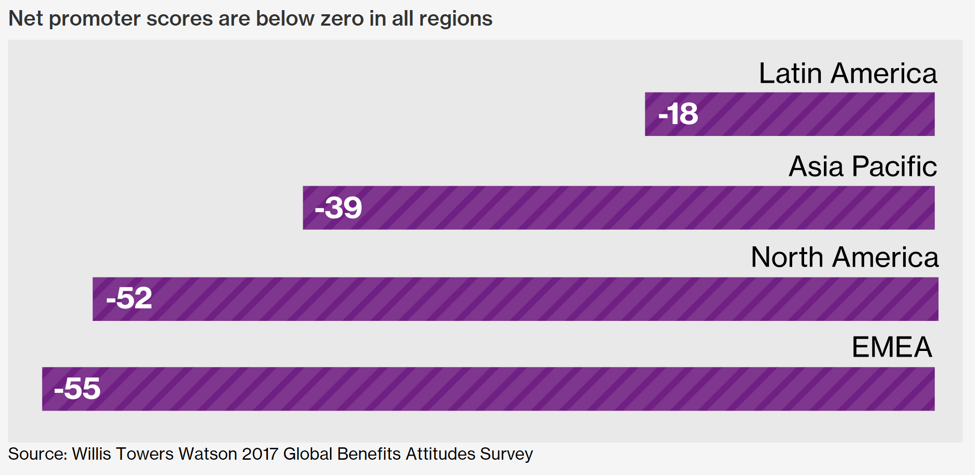According to the 2017/2018 Global Benefits Attitudes Survey from Willis Towers Watson, there is a divergence of opinions between employers and employees on whether or not wellness programs improve employee health. Fifty-two percent of employers believe their wellness programs improve their employee’s health behaviors, but only 32% of employees agree. More than 60% are actively dissatisfied with existing wellness offerings. Depending on an individual’s perspective on employee wellness programs, these survey responses may not be all that surprising.

Employers, Don’t Give Up
Nevertheless, employers still have a strong business case for investing in employee wellness programs. The survey also found employees with poor health miss twice as many days from work and are 25% more likely to work while sick, a concept known as presenteeism. Employees with poor health are also twice as likely to be disengaged with their work and 43% more likely to experience stress and anxiety.
The good news is that employers do not need a survey to recognize the deficiencies in their programs and remain committed to improving employee health. Nearly three-fourths (72%) of employers said they are actively looking to improve their wellness programs and invest more heavily in their success. To deliver wellness program success and extract the value from healthier employees, employers just need to recalibrate their approaches and realize that there is not a one-size-fits-all approach for every employer. One area identified by the survey that many employers can benefit from is providing more options. This is especially true for employers with millennial or younger populations. According to the survey, employees with choice and flexibility are twice as likely to feel their benefit program meets their needs. With most wellness programs limiting themselves to physical health and maybe nutrition, many employees with well-being needs tied to emotional, mental, or financial health feel left behind and have negative perceptions of their employee wellness programs. Employers looking to invest more in an existing program or launch a new program from scratch need to broaden areas of focus beyond traditional areas of well-being.
This latest biennial edition of the Global Benefits Attitudes Survey analyzed more than 31,000 employee responses in 22 markets.












